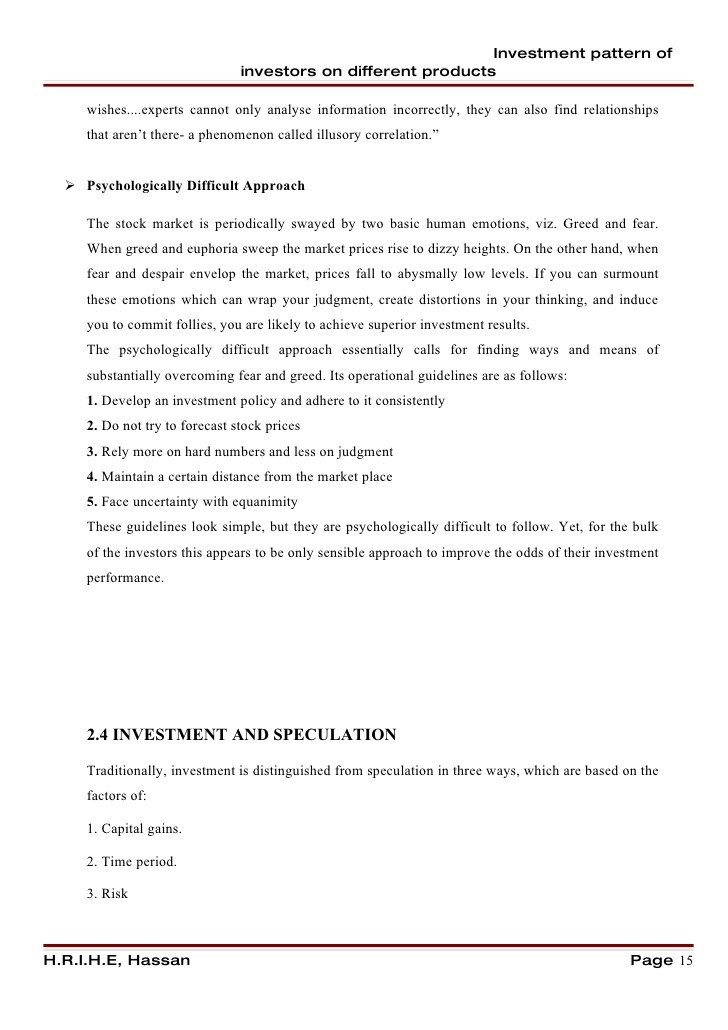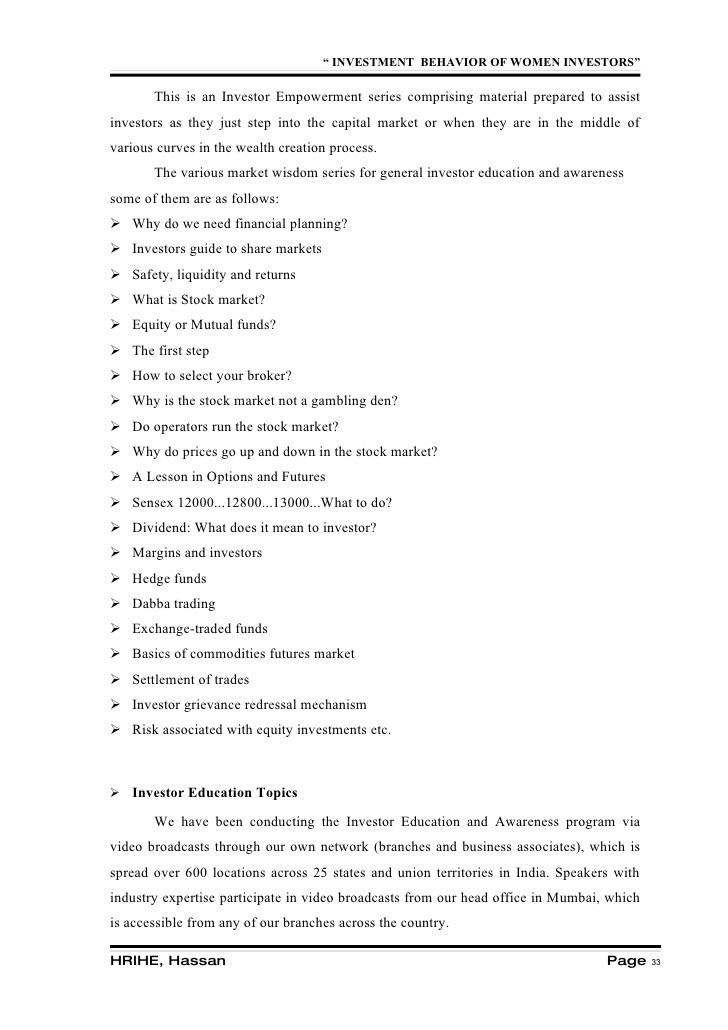One of the oldest ideas about stock investing is that investors can be classified into categories
Post on: 23 Сентябрь, 2015 No Comment

One of the oldest ideas about stock investing is that investors can be classified into categories and ranked by their investment knowledge and sophistication
Is Investor Sophistication a Factor?
One of the oldest ideas about stock investing is that investors can be classified into categories and ranked by their investment knowledge and sophistication. There are people in the know and those on the outside (insiders versus outsiders). The concept is that sophisticated investors would be relatively right about the market, and the uninformed investor would be relatively wrong.
The odd lot theory developed in the 1930s was an attempt to describe the class of investor that is usually wrong at market turning points. There have been attempts to try to locate the other sidethe groups that show correct market activity at turning points. I have never been satisfied with the results.
Significantly, Humphrey Neills formulation of contrary opinion in 1954 doesnt distinguish whose opinion we are measuring. It says only that at major market junctures the widely accepted opinion about market direction will be wrong. After searching for years, I have come to the conclusion that almost any large body of individuals, no matter their level of sophistication, generally holds the wrong opinion at critical market junctures. In other words, there is no class of investors whose investment actions are usually right at major turning points.
This seems to be true of mutual fund money managers as a group. You would think that this would be a sophisticated group, yet according to statistics, they usually have the highest cash position in the funds they manage at a market bottom (when they should be fully invested) and the least amount at the top (when they should have lots of cash). Some people attribute this to investor redemption, but a careful study disproves it.
Similarly, it was commonly believed that the trading activity of Wall Street firms and floor specialists showed that they were indeed very sophisticated and usually right with their investments. Statistics of their trading activity seemed to confirm it. In my opinion, however, the calculation wasnt measuring what everyone thought it was. Other measurements often showed a different picture.
With that said, the only group that did seem to be somewhat right with their investments were corporate insidersthe corporate officers and directors who have to register with the SEC when they want to buy or sell their companies stocks. Their buying and selling generally seemed to turn out pretty well, but outside of this small group, I have found no others.
HOW INVESTOR EXPECTATIONS ARE MEASURED
The methods for measuring investor expectations fall into two categories. The first attempts to measure what investors are thinking by calculating ratios based on what they are doingtheir transactions. The second category measures what investors are thinking by directly polling them to assess their opinions on the market.
Its important to note that no matter which method you use (measuring investment activity or polling), the data is applied in the same way. In practice, you must have a fair amount of data on hand, enough to back-test the data through a number of severe bull and bear markets. You need long historical data to determine with any accuracy what levels represent extreme investor sentiment for that indicator. For example, if some indicator or ratio goes to a reading of two at four separate bear market bottoms, you set two as an extreme reading of bearish sentiment for that indicator.
First Method: Investor Activity
Investor activity can be measured by looking at a variety of indicators, including short-selling ratios, put/call ratios, the volatility index, and the Rydex ratio.
The Short-Selling Ratios
An investor usually sells stock short when he or she is expecting a decline. Thus, the amount of short selling in the market is usually a measure of bearish sentiment. In the past, analysts have measured short selling in a variety of ways: odd-lot short selling, total public short selling, member short selling, specialist short selling, and short open interest. For example, Figure 5.1 shows the specialist short-selling ratio from 1966 to 1976. It measures the percentage of total short selling attributed to floor specialists. These short-selling indicators were extremely useful at signaling market tops and bottoms in the 1960s and 1970s, but they havent worked since 1984, which marked the advent of program trading. Program trading is the instantaneous buying and selling short of a stock or index to lock in an abnormal difference in price between two similar or identical investments. This type of short selling is done solely to lock in an investment gain; it does not indicate any expectation that prices are headed lower. Ultimately, this arbitrage short selling became so large that it introduced too much noise into the ratios, which made them useless. Although they are still followed, I do not recommend that anyone use the short-selling indicators any longer as a means to measure market sentiment.
The Put/Call Ratio
Another method of measuring investor activity is the put/call ratio. Officially, a put is an option to sell a stock at a specified price for a specified time. People buy puts if they expect the price of a stock to decline. A call is an option to buy a stock at a specified price for a specified time. People buy calls when they expect the price of a stock to advance. Because puts and calls can get very complicated, lets just say that puts are bets that stocks will decline, and calls are bets that they will advance. By calculating the ratio between the number of puts and calls, it is possible to get a good idea of what investors expect stock prices to do. In 1970, before the creation of the Chicago Board Option Exchange (CBOE), the only available data on puts and calls was an informal option market put together by certain option dealers. It was Marty Zweig, in a couple of pioneering articles in Barrons, who analyzed the use of options as a measure of contrary opinion. The data necessary to follow these options, however, was difficult to come by. When formal option markets were established in the mid-1970s, it became much easier to track these ratios on a daily basis. I have been following them since the first year CBOE opened.

You can calculate two different ratios: the ratio of puts to calls for all individual stocks and the ratio of puts to calls for the index options. First, lets look at index options.
I remember dreaming in the late 1970s, about five years before their inception, that if index options were ever created it would be the perfect way to apply the theory of contrary opinion. When my dream was finally realized, I was disappointed; they never turned into the great indicator of contrary opinion I thought they would be. It was quite a disappointment. On average, index put buying exceeds index call buying by as much as 2. 1, but this ratio has been gradually rising over the years. For this reason, its hard to establish the band that represents extremes in bullish or bearish sentiment. More importantly, the ratio has a tendency to go in the opposite direction from what you would expect. Studies seem to indicate that more institutions are using index options as market hedges, thereby skewing the numbers the way program trading skewed the shortselling ratios. Therefore, I do not use index options as an indicator.
NOTE
I know that the expansion in financial products over the last 20 years is goodI often trade the index options. However, from another point of view, I am disappointed to have lost first the old short-selling indicators and then the index options as good and reliable indicators for helping predict what the market is going to do. This is especially true as we enter a trading range market, when these tools would have been very useful.
The only indicator I use for studying the ratio of puts to calls is the ratio on individual stocks. This is the same basic method that Marty Zweig pioneered in 1970, and I believe it is still the best puts and calls indicator of investor sentiment. You can see this indicator in Figure 5.2. It usually goes high at market bottoms and low at market tops, following the pattern that you would expect from contrary opinion.
Newer Indicators
The VIX index and the Rydex mutual fund ratio of bull and bear fund money flows are two newer indicators of investor sentiment that have proved to have value. Unfortunately, they dont have a long track record to establish extreme readings through a number of bull and bear market cycles. What we have seen of them shows that they are very useful.
The Volatility Index (VIX). The VIX index requires a bit of explanation. It is based on the theory of the price of options.














